Central Region
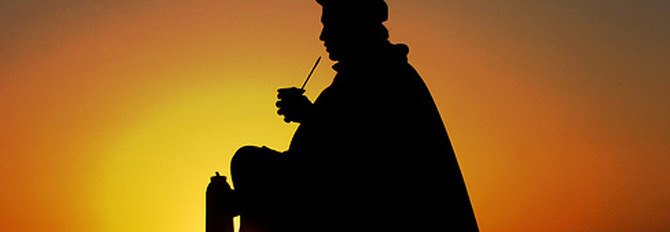
The Pampas is a wide green meadow covering up to 25% of the Argentinean territory. It's the home of the legendary gaucho, and the center of all the romantic fantasies about Argentina. Limitless land, propitious for daydreaming and meeting your own feelings.
Extensive crops of alfalfa, sorghum, wheat, corn or sunflower grow under a blue endless sky. Infinite meadows, sprinkled with thousands of cows. And dominating these plains, the splendid ranch house, with the horses tied at the entrance and the gauchos drinking mate under the ombú's shade.
Towards north of "La Pampa", we found to "Córdoba" so named "La Docta" - due the first national university was founded there-. Córdoba is without doubt, the second comercial and cultural pole of Argentina.
Towns dotted with dozens of colonial hermitages which still conserve the autochthonous characteristics of its towns. Jesuit remains, together with lush valleys and sierras are ideal for excursions or simply to sit back and enjoy the beauty. Natural and cultural Park are part of the heritage of this province and part of the world.
The Pampa
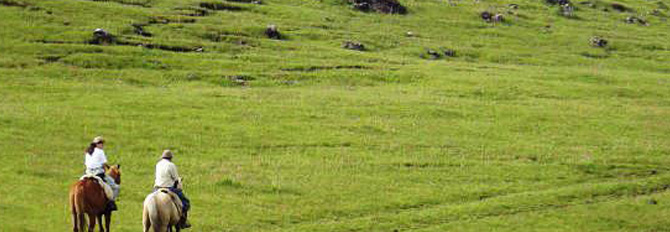
Is the Pampas the name of the indigenous tribe that inhabited these endless prairies or the men acquired it from the Pampas?. Opinions are divided between the two hypothesis. Some people affirm that Pampas means, in quéchua language "flat land", and in this way may be during hours or even days, looking at endless crops and drowsy villages with their wide XIX century brick houses. In this limitless Pampas it's difficult to draw itineraries. So, we'll begin with an imaginary tour along the roads of history and landscape, and later, another specific proposals.
The Gaucho
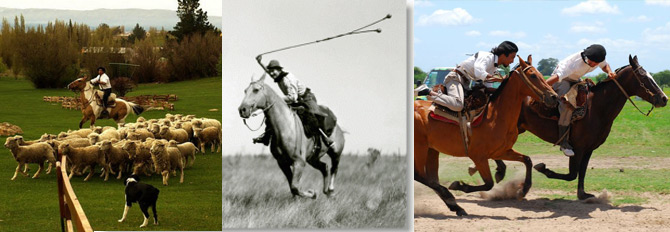
Their ancestry raises to two civilizations (european and indigenous). Probably first gauchos broke their ties with the past and went inland, to the loneliness of the infinite Pampas, whith enough water and grass for the livestock brought by european settlers. Only one hour trip from Buenos Aires, the traveler will be able to know the chores of the Argentinean ranchs, the gaucho's life and their incredible skill with the "boleadoras" (three stones tied by a rope that, when rushing, entangle in the prey's feet), the knife, the lasso, and the appropriate way of salting the best meat in world. They ride around ranchs and meadows, attired with baggy, hat or beret, handkerchief round the neck, spurs, and sharp facón in the belt. On holidays they wear a wider belt with old silver coins, and while roasting meat they make their songs and payadas flow.
Destination Argentina
Patagonia- Perito Moreno. Calafate. View of the largest in the world, declared by Unesco glacier: the Perito Moreno Glacier.
- Bariloche. Famous for its ski resorts and nominated as Little Switzerland, consists of 7 beautiful lakes. It is the city of Luxury Hotel of 5 stars Llao Llao, place known products are world: Trout, Chocolate branch, rosehip oil, etc.
- San Martin de Los Andes. The Andes dreamed surrounded by snow, lakes and great varieties of trees, different landscape in every season, leaving the memory in a corner of our hearts.
- Ushuaia. The city of end of the world, located in the province of Tierra del Fuego. We wandered through the train end of the world, enjoying the most of the feeling that surprises us with the beauty of Patagonia.
- Puerto Iguazú. A must - see place "Iguazu Falls".
- The Moconá Falls. Incredible natural spectacle of water falling. Famous as a place of camp.
- Wanda mines.
- Formosa.
- Buenos Aires. Atmosphere full of elegance, an attractive city with essence of Buenos Aires.
- Tango Show. We take the Origin of Argentine tango "La Boca" - "Caminito" to taste delicacies and the beautiful locals of the old tango, through your own eyes, mouth and ears!
- San Telmo. A neighborhood of antiguidades.
- Recoleta. Where rest the Great Argentine Mother Evita and the nobility of the last century.
- Palermo. It is a cosmopolitan neighborhood. There is fun, food, fashion and nature.
- Puerto Madero. A commercial and residential district. You enter through the Bridge of the Woman. It is an area of high tourist level. As the Hotel Faena of 5 stars ~ a place charming and unique style in the neighborhood of Puerto Madero.
- Tigre.City of river tourism, Sarmiento, Parana de las Palmas navigated, covering the entire delta and the formation of Islands. It is also the location of 2nd Chinatown in Argentina.
- Salta.
- Jujuy. Purmamarca, Ticara, Huamauaca.
- Tucumán.
- Santiago del Estero.
- Catamarca.
- San Luis. In this province is a city called Merlo, which was recognized as "the third of Microclima the world", here you can get the original gemstone Onis and other natural stones.
- Mendoza. Taste the best wine in the world.
- El Leoncito. Enjoy the scenery Mon Valley. Taste the wine from San Juan province. Visit the Leoncito National Park.
- Talampaya.
Agricultural Ranchs

For taking hold of Pampas spirit it is advisable to visit ant ranch or any agricultural town, with their pulperías, and perhaps some old mangrullo (watching post for preventing the Indians attacks). You can lodge in the ranchs, with elegant and comfortable mansions, where typical chores of the Argentinean ranchs, exhibitions of the gaucho's skillfulness and tasting the best roasted meat. During the Tradition Festival at San Antonio of Areco (November 10), the gauchos take part in picturesque parades and folkloric shows.
Lihué Calel

South to Santa Rosa, and beyond of the "Valle de los Angelitos" is located the "Lihué Calel" National Park, what in " mapuche" language means "Hills of Life" or " Living Bodies". It was created in 1.977, with a surface of 9.900 has. to protects the widest variety of indigenous plants and animals. The maximum elevation with 600 meters above sea level, is the Scientific Society Hill, where it´s possible to get scenary views of the Park.
Other point of interest is walking by the self-guided paths to access to Valley of "Namuncurá" or Paintings Valley, where you can find the archaeological rests of the first inhabitants of these regions. Unforgettable, w´ll be the visit to the ruins of the historical Santa María Ranch. Close to the Park, i´ts located "Puelches", an small village known for the quality of the loom of theirs craftswoman, who to dye with roots of the zone.
Córdoba
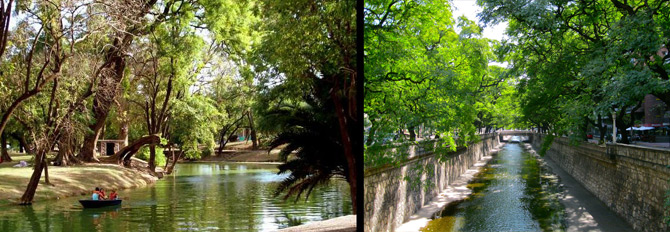
Córdoba de la Nueva Andalucía was founded at the "Suquia"riverside on the end S. XVI. Quite modern and important city but it has preserved your cultural heritage from the Colonial Age (as the Colonial buildings built between the S XVII- XVIII). In the beginnig of S XVII the Jesuits founded the first National University where many important political and culture figures studied.

A pedestrian circuits let us visit green spaces as San Martin square or Sarmiento Park, the Cathedral, the historical Town Council and the Light Block, with the Company of Jesus Church, the Trejo's House, The Monserrat National School and the Fray José Antonio de San Alberto Museum, teathers and cultural saloons as well as all levels recreation centres. An important industrial and agricultural activities has development around Córdoba city. One exponent of this activity is the Feriar establishment where international expositions are carried out during the whole year.
Jesuitic Ranchs

The Jesuit buildings and ensembles of Córdoba and the estancias are exceptional examples of the fusion of european and indigenous values and cultures during a seminal period in South America. It´s why the "Road to the Jesuit ranches", was declared in 2000 year, World Cultural Heritage by the UNESCO. The road starts at the Caroya ranch, the first ranch establised in 1616 by the Jesuit group of Jesus Company. After that, visitors can go to the Jesus Mary ranch and museum, founded in 1618. The tour is then concluded at th Saint Catherine ranch, founded in 1622. This last ranch is the biggest of the three and it is a very important agricultural, cattle breeding and textile center in the area.
Hills & Rivers
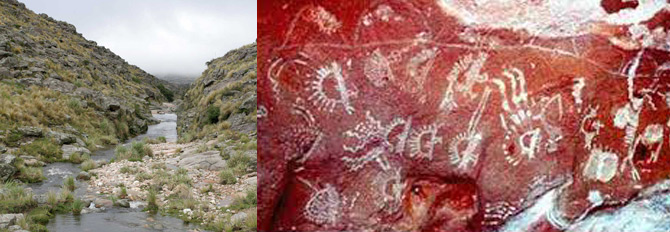
Leisure and sports, archaeo-cultural expressions and wild nature...all this is foundable in the interior of Córdoba... Cities like La Falda, Capilla del Monte, La Cumbre or Cosquín, are interesting choices. Anually in Cosquin is celebrated the bigest Folclore Festival and currently is celebrated too the growing Rock in Cosquin. Villa Carlos Paz and the Lago San Roque constitute a great touristic center of international importance where is easily to see different water-sport as wind surf or fishing.
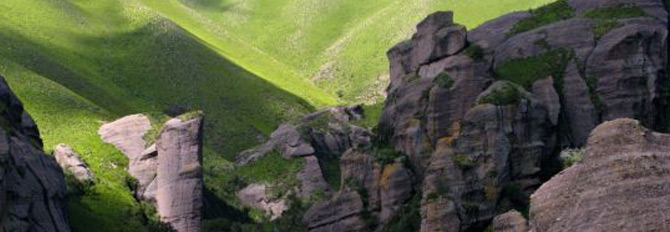
Lovers of the past will find in "Cerro Colorado" a double reason to be amaizing . The Cerro Colorado is part of a huge red moutain range, where indians have left petroglyphs concernt to their way of life and customs. In addittion, the world famous poetry-musician Atahualpa Yupanqui, lived here and nowadays his home serves as museum. Córdoba is surrounded by a wonderful scenary and by a collection of samples of natural prodigies, ready to be enjoyed. Foxes, condors and other autochthonous species are going to be displayed at front to your eyes for example in Laguna of Mar Chiquita ( a true inner sea), or in the Quebrada del Condorito National Park or in the Pampa de Achala. The park’s highlights are its landscape and geomorphological value: the high pampas covered by pastures, the rocky sierra without vegetation, and the deep gorges.
